Navigating turbulent tides: An exploratory look at ‘All That Weathers’
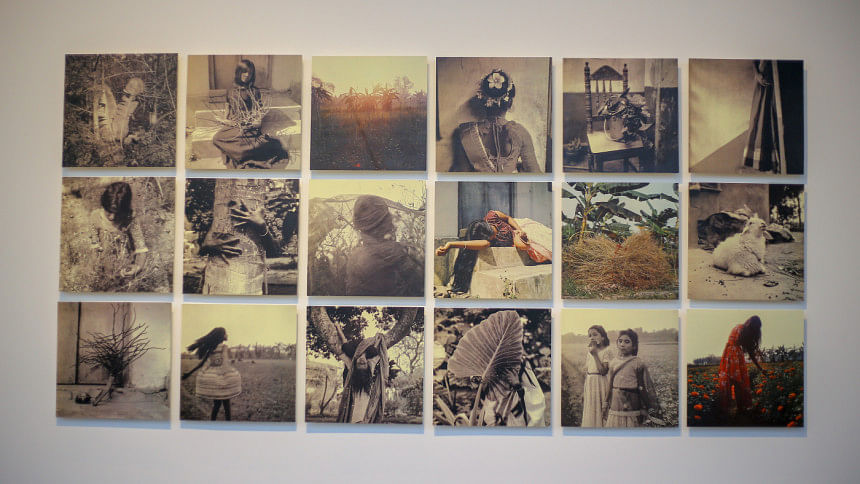
Resting Academy's "All That Weathers", currently underway at Drik Path Bhaban, is more than just a mere accumulated display of photography exhibition. It is a voyage through the heart of change — a tapestry woven with stories from the intimate landscapes of Bengal, Kashmir, and Central India.
The eight narratives presented by the participating photographers delve into a remarkable spectrum of themes that have either transformed individuals or places. They shed light on the often-underrepresented struggle with mental health, the enduring strength found in sisterhood, and the powerful legacy of inherited musical traditions. One amongst them presents a champion sportswoman defying the boundaries of a rural community and explores the scars left by an ecological disaster. Another also compels visitors to confront the complex interplay between religion and politics and to mourn the fading embers of vanishing performance arts.

What makes the exhibition particularly intriguing is its genesis. It displays the culmination of a six-month residency programme where the participating artists – Ayan Biswas, Brihat Rai, Elodie Guignard, Poornima Nair, Sabin Shrestha, Suparna Nath, Vishesh Anand, and Zainab – underwent a transformative journey. Mentored by renowned curators, artists, writers, and bookmakers across three countries, these individuals honed their artistic voices and rediscovered themselves as storytellers.
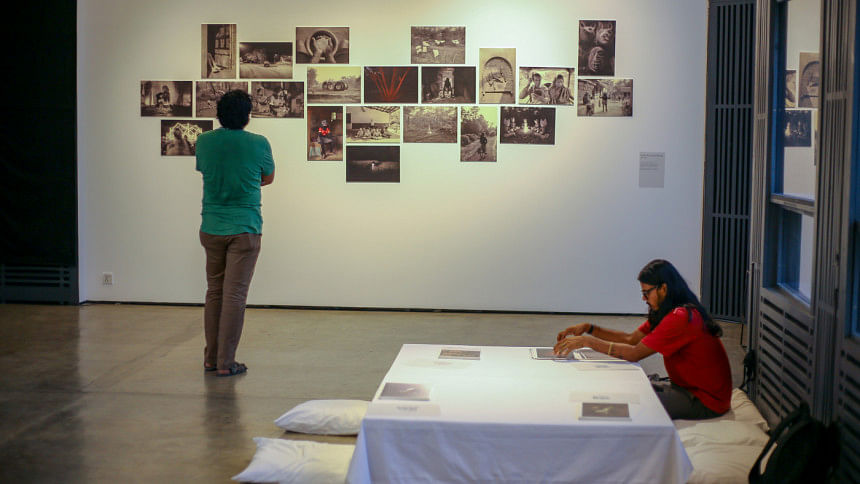
Brihat Rai's "When The Dust Settles" confronts the stark reality of the glacial lake outburst flood (GLOF) in Sikkim. His lens captured not just the devastation wrought by the raging waters, but the lingering mortal cost – the shattered Teesta Bazaar, homes and lives washed away. This work resonates with the broader themes of "All That Weathers", highlighting the environmental impact on mental health.
"I have used a multimedia vision to explore the resistance and resilience of these people. The emotional toll is palpable, and the constant agony of the community is caught between the fury of nature and the complexities of decision-making by distant authorities," he explained.

In vivid contrast to that, Poornima Nair's "Khel" bursts onto the scene with vibrant energy. Here, the spotlight shines on the Ujala Circus, a travelling troupe traversing the heart of India. The title, "Khel", meaning "play" in Hindi, perfectly captures the essence of the circus – a world where fantasy and reality intertwine. She portrays the circus not just as a performance, but as a way of life, like the fifty artists who call the "tamboo" (travelling tent) their home. Among all that is temporary what remains constant is their unparalleled sense of community, a familial bond that transcends the limitations of language, regional and religious identities, and also their continued faith in their art form.
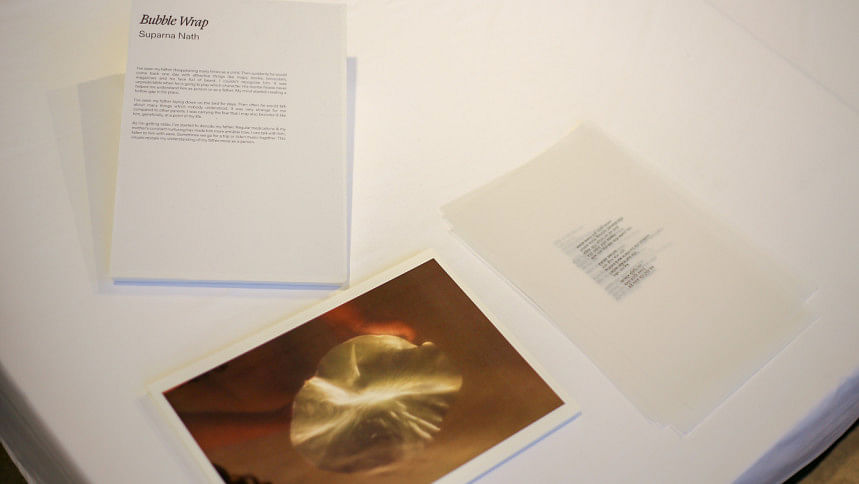
Suparna Nath's "Bubble Wrap" series offers a deeply personal exploration of mental illness and its impact on family dynamics. She uses photography as a tool to navigate her complex relationship with her father, who grapples with an unnamed mental illness. It hints at a childhood filled with confusion and emotional distance where her father's unpredictable behaviour, characterised by disappearances and reappearances, is portrayed as a source of fear and a barrier to understanding him. At the same time, it also presents a narrative of hope and acceptance, as his condition improves and this newfound stability allows for a deeper connection to develop.
"I got to know about Resting Academy last year and this course has been an exciting journey. It taught me the art of storytelling, adding a new dimension to our images. During this course, I have worked on a very sensitive topic, exploring my understanding of my father. It is a process and a reflection of him as a person," she shared.
"Kabza ("Capture" in English)" by Vishesh Anand delves into the shifting dynamics of the town of Dhar where the intersections of history and religion stir deeper currents of political and cultural strife. Dhar stands as a testament to its storied past, adorned with ancient relics and ruins. Yet, beneath its historical facade, a contentious narrative unfolds, one where history is manipulated to propagate biased agendas, often targeting the Muslim community. It beautifully captures the town's trajectory as it veers towards a more rigid and saffronised ideology, exploring how societal narratives are weaponised to justify discrimination and encroachment. Amidst the shadows of ancient ruins, Anand explains how the rising saffron tide not only threatens the tangible history etched in stone but also the fragile bonds that once bound this community together.

"Où commence le jour? (Where the Day Begins?)" by Elodie Guignard, shot in a village in West Bengal, delves deep into the rhythms of daily life. Her lens focuses on the villagers, particularly a cadre of young women, weaving narratives that intertwine both her imagination and theirs. It is a tale of continuity and transformation, navigating personal and communal histories, of the seen and the unseen, of boundaries and aspirations, straddling the realms of childhood, womanhood, and the crossroads between dreams and reality.
"I have been following Pathshala for quite some time. As a photographer, I mostly work on portraits and my practice is very much influenced by paintings, poetry, and literature. In this series, I have been very fascinated by the notion of living near the border. It evolved into a fictional world where the border became poetic, between different themes of life," she explained.

Sabin Shrestha's "A Thousand Scrums" narrates the inspiring journey of Chanda, a young girl from Saraswatipur, West Bengal, whose life was transformed by rugby. Living in a remote village where traditional occupations prevail and education opportunities are scarce, her introduction to rugby through the Khelo Rugby organisation opened new horizons for her. Despite societal norms, she excelled in the sport, participating in tournaments at local and international levels. Now 25, Chanda reflects on how rugby empowered her to break gender barriers and pursue a future focused on personal growth and community development.
Finally "Hazaron Khwahishein Aisi" ("Thousands of Wishes Like These") by Zainab tells the story of two young sisters, Irfana and Rehana, living in a village in Kashmir. From a young age, they learned to play various musical instruments under their father's guidance, filling their home with the melodies of Santoor, Kaeshur Sitar, Saaz-e-Kashmir, and Tabla. As they matured, practicing music became increasingly challenging, with their rehearsals now blending into the sounds of nature.

"I have been practicing photography for three years now. My work is based on two sisters who practice Sufism in Kashmir. I have tried to document what it is like to practice music, their bond fuelled by a shared passion and the sense of isolation that follows an unconventional dream," she Zainab.
Finally, "Golpo Holeo Shotto" ("It's True Even If It's a Tale") by Ayan Biswas explores the pervasive theme of fear in Bengali folklore, serving as a mirror to the evolving identity and culture of a changing society. Inspired by a Bohurupi artist from rural Bengal, who embodies imaginary characters for a livelihood, he delves into a world inhabited by spirits often dwelling in abandoned spaces—a reflection of societal neglect and the harsh realities of poverty and malnutrition.

These tales, tinged with humour, transform fear of the unknown into familiar elements of everyday life, forging connections between marginalised communities and mainstream society through oral tradition. Despite this cultural significance, the social status of these artists remains precarious, further complicated by the advent of digital entertainment, presenting new challenges to the preservation of this traditional art form.
Curated by Tanjimul Islam and Shadman Chowdhury, the photographs in "All That Weathers" function as prompts, sparking a multitude of questions. By juxtaposing seemingly disparate themes, the exhibition invites visitors to consider the interconnectedness of human experiences.
It is open for all till May 5, from 3pm to 8pm.

 For all latest news, follow The Daily Star's Google News channel.
For all latest news, follow The Daily Star's Google News channel. 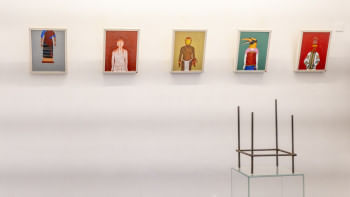




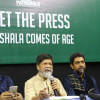




Comments